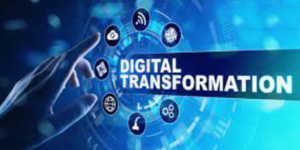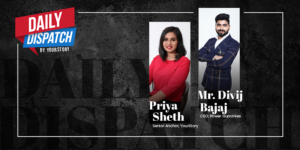The Bangalore K-Community is a group of professionals in knowledge management (KM) who meet regularly to discuss case studies, advances, and trends in the field. With participants from five countries, the recent meetup on Branding and Communication in KM and Learning Initiatives featured a range of expert insights and tips.
The virtual event was hosted by Prof. Molly Chaudhuri, Director at Manel Srinivas Nayak Institute of Management. As the moderator, here are my takeaways from the wide-ranging and informative discussions.
As media partner for the annual CII Global Knowledge Summit, see also YourStory’s coverage of the editions from 2021, 2020, and 2019, and sessions takeaways from the earlier Bangalore K-Community meetups on Metrics, Case Studies (HGS, Unisys) and Work From Home.
See also our profiles of the Most Innovative Knowledge Enterprise (MIKE) award winners: Dubai Municipality, EY, Tata Steel, Cognizant Technology Solutions, Afcons Infrastructure, Petroleum Development Oman, BINUS University (Indonesia), and Mobarakeh Steel Company (Iran).
Trianz
“We all recognise the importance of culture when it comes to establishing a KM programme in any organisation. Branding and communication is a critical element of culture-building exercise,” explained Ved Prakash, CKO of digital transformation services Trianz.
The branding philosophy is to enable end-users to associate the initiative or platform with its specific purpose in a self-explanatory way. “Thus, knowledge-sharing forums take names such as KYC (Know Your Client), KYS (Know Your Solution), or KYE (Know Your Expert),” he described.
There is also KM Unconference, with a tag line of Discuss Learn Apply — a free-flowing discussion on a topic, while Dialogue Café is a leader-led conversation.
“The enterprise digital workplace, which brings together everything the employee needs for their knowledge and day-to-day tasks, has been branded as Pulse,” Ved added.
Individual knowledge applications include K-Bank (organisational knowledge repository), K-Reuse (reusable business and technology components), K-Bid (sales enablement resources, including proposal components), and K-Tube (streaming content, categorised into channels).
KM branding at Trianz
Other applications are K-Connect (events, people finder, communities) and K-Bytes (byte-sized knowledge on the mobile). The chatbot on the knowledge portal has been named Delta, based on end-user inputs.
“The KM team at Trianz holds two mega-events during the year. One is called TKL (Trianz Knowledge League) and is organised in parallel with the IPL (Indian Premier League),” Ved explained. Its fifth season was conducted recently, with the spotlight on the consumption of knowledge through interesting daily challenges.
The second event is called the Festival of Knowledge, which starts during the Dussehra fortnight and goes on for around five weeks till Diwali. “It focuses on contributions of various types of artefacts in a fun way,” Ved said.
Both events have leaderboards and lots of excitement is built up before, during and after the event. “More excitement is added through a selection of Winners of Winners from a Wheel of Fortune, which is broadcast live,” he described.
Voice of Associates is a booklet combining qualitative and quantitative feedback received from participants and circulated to the organisation after these events.
“There is also a quarterly KM newsletter branded as Resonance. The name was selected from a competition, which saw huge participation,” Ved recalled.
“Constant communication is key to build awareness and increase adoption of various KM initiatives. In Trianz, we use a group email id with the display name of Knowledge@Trianz, which helps an associate differentiate it from other communications,” he explained.
There are icons associated with each branded initiative or platform, which again has helped in brand recall. “The KM brand is further reinforced with certificates, trophies, and customised giveaways like coffee mugs, pens, key chains, and other mementoes that can be displayed proudly in the workplace or home,” Ved summed up.
KM branding at Afcons Infrastructure – 1
Afcons Infrastructure
The motto of Afcons’ Infrastructure’s Knowledge Services Group (KSG) is Learn, Share, Grow. “KM branding starts with the branding of the KSG logo,” explained Project Coordinator Jayadatta Lad.
The logo is used in all branding, communication initiatives, knowledge assets, and products. “Our knowledge portal is branded GNOSIS, which means experiential learning. APeL is our e-learning portal,” he added.
Special knowledge-sharing camps are held in November (Knowvember) and December (Dissember). Coinciding with Diwali and Christmas, the communication motifs include diyas, firecrackers, Christmas bells, and trees.
“The Mission 10,000 initiative aims at making every project a Knowledge Enterprise. Knowledge activities are gamified, and a leaderboard identifies top-performing projects,” Jayadatta said. The company’s innovation method is called Improvation®.
Another campaign built around promoting e-learning modules, with a focus on ‘Learning and Doing’, is named Brilliant You, Brilliant Organisation.
KM branding at Afcons Infrastructure – 2
Jayadatta also described another initiative called Big Zero for eliminating common errors and mistakes during critical activities. It denotes zero defects and errors.
“Marvel Series is a video series that seeks to create a sense of wonder and stoke the imagination of engineers by exposing them to the constructions marvels in the world,” he summed up.
Hinduja Global Solutions (HGS)
Sandhya Nagaraj, Senior Manager at HGS, set the context for the global firm’s KM initiative. “Organisation components around leadership, communications, and governance will drive awareness and motivation to share and utilise knowledge assets more effectively,” she began.
KM governance is about building the capability for good decisions. This helps improve productivity via knowledge reuse and provides a more consistent user experience. But challenges can arise in the alignment of perspectives and priorities, she cautioned.
HGS effectively markets the use and impact of KM via setting of expectations by leadership, sponsorship of regular events and communities, encouraging content harvesting, and embedding it into performance evaluations.
“Sponsors lead the change effort, providing communications and actions that demonstrate and reinforce behaviour and cultural changes,” Sandhya emphasised. Users are educated on KM benefits, and there are regular meetups of knowledge and community managers.
KM at HGS
“Leverage existing communication vehicles. Capture business impact stories and share them within the organisation,” she advised. Webinars and regular articles in newsletters and blogs also help.
“Create a contest or incentive/award programme to generate initial buzz about the programme,” Sandhya added. Together, this helps communicate, demonstrate, and reinforce the value of KM.
Activity and impact metrics of KM include contributor penetration, quality of knowledge assets, and knowledge reuse behaviours. Specific measures can be team efficiency, performance budgets, speed to completion, and satisfaction scores, Sandhya affirmed.
Ultimately, it should be shown how KM can improve productivity, innovation, business excellence, and revenue, she summed up. The “traditional mindset” of working with personal networks or direct teams should be replaced with the “social mindset” of shared goals and global perspectives and worldwide best practices.
Bosch Engineering and Business Solutions
The ‘Ten Tenets of Knowledge Management’ (Dashavakyam) were eloquently presented by Manoj Hariharan, Chief Knowledge Officer, Bosch Engineering and Business Solutions.
The 10 principles cover iteration, specialisation, behaviours, workflows, collaboration, seeking, timeliness, purpose, cross-functionality, and learning from failure.
“Build a minimum viable system and deploy it, and then work iteratively to both add new features and make corrections based on user feedback,” Manoj advised. “A very essential aspect of branding is to capture a namespace in the employee’s mind,” he added.
It is important to address employees’ needs to belong and piggyback on existing behaviours (for example, preferences for various digital channels). The branding of the KM initiative should reflect its core purpose and impacts, Manoj recommended.
“As CKOs, we need to publish our failures as much as we tout our successes. This builds trust in our efforts,” he affirmed. “When it comes to KM, the best marketing agents are trust and ownership,” Manoj summed up.
KM at Grant Thornton – 1
Grant Thornton
There are two dimensions of KM and branding, explained Balaji Iyer, Director of Knowledge Management and Enterprise Transformation at Grant Thornton.
“Branding of KM within the organisation, as well as branding and communications capability within the KM team, are both parts of our KM strategy,” he said.
Branding of KM includes the KM team, knowledge platform, products, and various KM programmes and initiatives. “Our KM organisation is part of the larger Enterprise Transformation group, and we make sure our branding and communication languages stay in sync,” Balaji added.
The intranet was named Canvas as a metaphor for opportunities, experiences, and possibilities. At its launch in 2018, a third-party firm was roped in for the branding activities, which included merchandise. “Our collaboration and engagement delivery engine is called ENGAGE,” he said.
The KM team itself needs branding and communication capability to promote awareness and adoption of knowledge sharing practices, platforms, and products within the organisation. “This is both on an ongoing basis but also during important milestones like products going live or key enhancements,” Balaji explained.
KM at Grant Thornton – 2
The partnership with the National Communications team is also a force multiplier. “We use our Knowledge Ambassador network and ‘user research’ ecosystem as listening posts for ideas and feedback,” he added.
Change agents amplify awareness and adoption efforts. “Staying close to end-users through ongoing engagement and communication have resulted in positive feedback loops,” Balaji affirmed.
The focus at Grant Thornton US is to continuously institutionalise knowledge. “We want knowledge-sharing behaviours and practices to be internalised as part of core delivery, instead of just a ‘cool thing’ to do when you have some downtime,” he summed up.
Acies Innovation
Consultancies can also evangelise the importance of KM to a broader and global audience, as shown by Randhir Pushpa, Founder of Acies Innovations.
“KM is gaining prominence as the ‘Future of Work’ is getting fast-tracked. There is now a level of comfort in having employees spread across geographies and working from anywhere due to the pandemic disruption,” he observed.
“The adoption of digital transformation and digital workplace went beyond anyone’s expectation. But it is a challenge to make the virtual workplace as resourceful as the physical workspace,” Randhir added. Employees should be able to effectively discuss, brainstorm, and coordinate work online.
“KM plays a key role in this. We have been striving to educate practitioners on the importance of KM and why KM is the right remedy for the challenges that arise with virtual workspaces,” he described.
KM branding by Acies Innovation
For example, Acies Innovations has launched a weekly publication called KM News, which covers key happenings in the KM world. “This news is aggregated from online media. We also review KM products and help practitioners better understand new and existing products,” Randhir showed.
They also host a thought leadership series of interviews on KM trends and positioning. “KM is a powerful addition to the management toolkit and can help organisations sustain leadership and competitiveness,” he summed up.
The road ahead
In sum, KM in learning organisations succeeds if there is awareness, acceptance, and adoption, according to Dileep R, Process Architect for KM at TCS. The branding of KM should cover positioning, processes and assets, and convey its purpose and relevance with clarity.
The values, mission statement and components of KM need to be effectively branded and communicated. This helps generate impact and sustainability of the KM initiatives, and effectiveness of the KM teams.
Broader issues addressed during the discussion were promoting awareness about the potential of KM for economic and cultural empowerment in society, and international collaboration between KM professionals. This is well exemplified by the KM Global Network.
For example, Gladys Kemboi, a KM consultant based in Nairobi, has championed knowledge-sharing initiatives in the development sector, youth communities, and rural areas. She also coordinates online meetups for knowledge mapping and sharing in Africa. KM can help in project evaluations for scaling up socio-economic initiatives, transforming e-learning, and generating employment, according to Gladys.
S Vaidyanathan (“Vaidy”), Founder, The Ganga Trust
The evening session ended with a tribute to S Vaidyanathan (“Vaidy”), Founder, The Ganga Trust. He was the valedictory speaker at the CII Global Knowledge Summit 2021 in April, but unfortunately passed away due to COVID a month later.
The IIM Bangalore graduate suffered from a spinal cord injury in 1990. He subsequently launched a number of initiatives to ensure quality rehabilitation for others with spinal cord injury.
Future sessions of the Bangalore K-Community will feature more case studies of KM, organisational learning, emerging technologies, and inclusion in the knowledge society.










